Eimmart: the death of Camilla
Annotations
Cavalry Battle: Camilla falls from her horse, hit by a spear in the chest, and is caught by her companions; the mounted figure in the middle is obviously another Amazon.
Reiterschlacht: Camilla sinkt, von einem Speer in die Brust getroffen, vom Pferd und wird von ihren Gefährtinnen aufgefangen; die berittene Figur in der Mitte ist offenbar eine weitere Amazone. (Suerbaum)
Engraving from a German children’s picture-book version of the Aeneid by G. J. Lang and G. C. Eimmart, “A tapestry of Roman virtues as seen in Vergil’s Aeneas and his brave deeds, rendered in sparkling engravings, as illustrations of the remarkable deeds of antiquity, for the common benefit of noble youth,” (Peplus virtutum Romanarum in Aenea Virgiliano eiusque rebus fortiter gestis, ad maiorem antiquitatis et rerum lucem, communi iuventutis sacratae bono, aere renitens) (Nuremburg: J.L. Buggel, 1688), pl. 46.

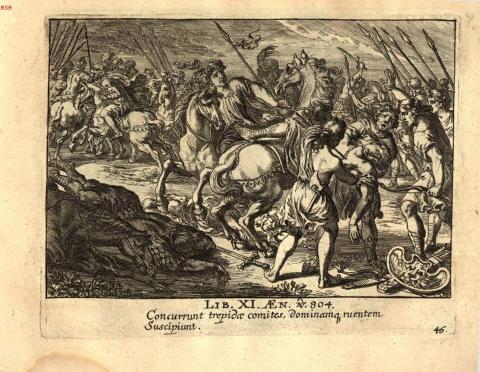

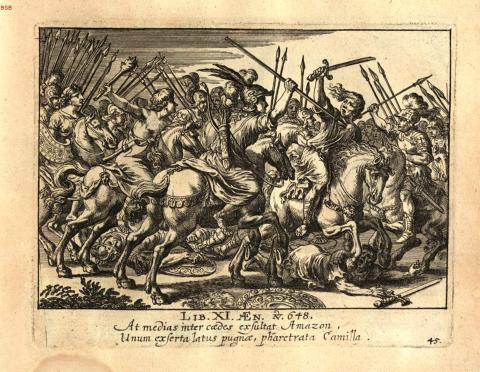
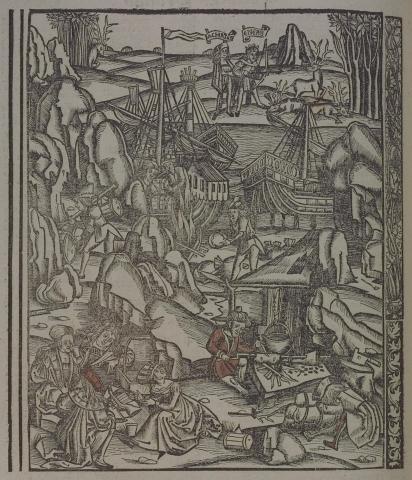
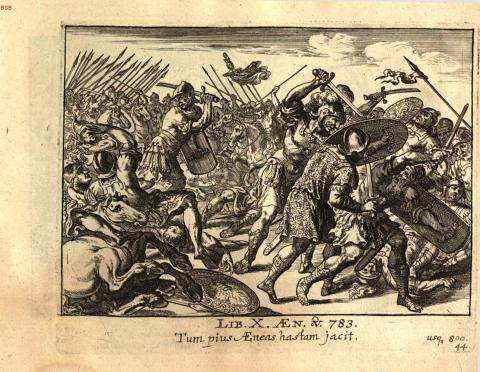
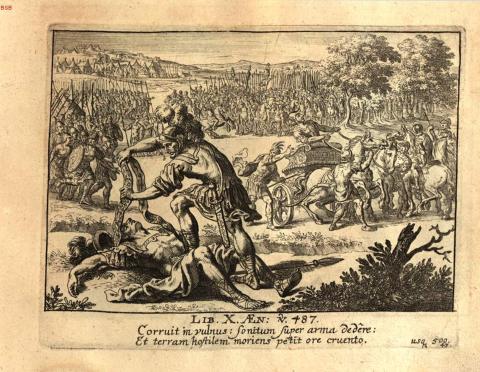

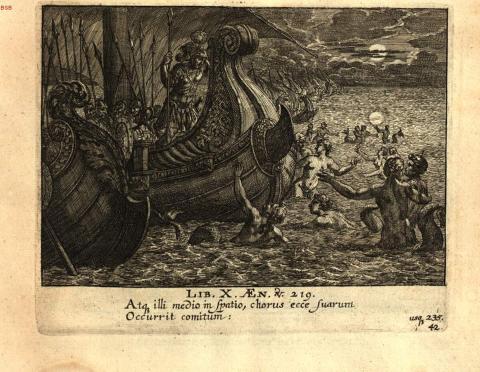

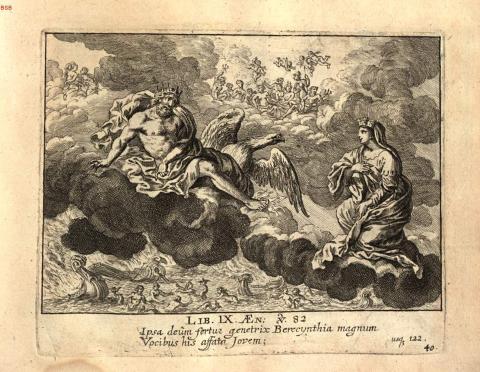
While in pursuit of the Trojan priest Chloreus, Camilla has unknowingly been hunted by Arruns. In this scene Arruns has shot her, and may even be depicted in the left hand background as the man fleeing on a horse. At 804-606 the cowardly Arruns is described as running away before he can be seen or caught by Camilla’s entourage. (Lucy McInerney)